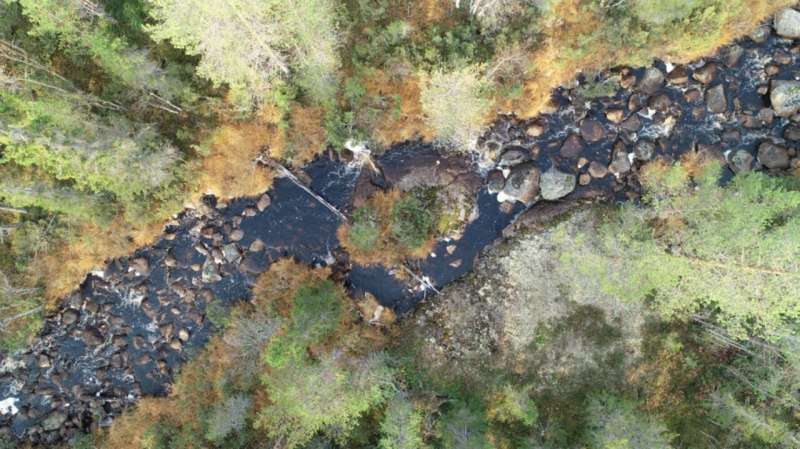
Human intervention has destroyed critical habitats for salmon and trout in Swedish streams. Researchers at Umeå University have discovered crucial clues to help restore the streams to their natural state.
“To understand the processes that shape them, we need to think more about how glaciers function, rather than streams,” says Lina Polvi Sjöberg.
Swedish streams are home to a wide range of animals, including salmon, trout and the threatened freshwater pearl mussel. For over a century, Swedish streams also provided a convenient way to transport logs from inland forests to coastal sawmills. To facilitate transport, streams were straightened and boulders dynamited, which destroyed critical habitat for salmon and trout.
Restoring these streams has been difficult because we know little about how they looked and functioned before human modification. Researchers at Umeå University have now found that glacial processes during the ice age and deglaciation 10,000 years ago control how these streams look and function today. The study is published in Earth Surface Processes and Landforms.
“These results change how we think about stream restoration in large parts of the Nordic region, since now we need to think more how about glaciers function rather than streams,” says Lina Polvi Sjöberg, Associate Professor at the Department of Ecology and Environmental Science.
For months the researchers toured northern Sweden searching for natural so-called boulder-bed streams. The study indicates that they function very differently to most rivers worldwide.
Most streams can change their width, depth, slope and roughness in response to water flow. This happens in predictable patterns, which underpin the science of stream restoration. However, the researchers found that Sweden’s boulder-bed streams don’t show most of these patterns. In fact, they have remained relatively unchanged since the end of glaciation.
“The Swedish landscape is different due to the relatively recent influence of glaciers. This means that the ways in which streams are managed in other parts of the world, don’t always apply here,” says Lina Polvi Sjöberg.
The findings demonstrate that we need to change how we restore these streams, to mimic glacial legacies. This involves adding high densities of large boulders, scattered across the stream and removing bank stabilization to allow streams to widen. Richard Mason, the postdoctoral researcher who led the field research explains:
“Since every stream is different, we need to become detectives to determine what each one would have looked like before human modification. For example, we found that by measuring boulders on land next to these streams, we could estimate the number of boulders that would have existed in the streams.”
Restoring streams back to their natural condition will help fish populations directly, by providing better habitat and food sources and helping fish to adapt to climate change.
“In places where we can restore natural processes, the streams themselves can often take over management for us and will be better able to look after themselves in an uncertain future,” says Richard Mason.
More information:
Richard J. Mason et al, Unravelling fluvial versus glacial legacy controls on boulder‐bed river geomorphology for semi‐alluvial rivers in Fennoscandia, Earth Surface Processes and Landforms (2023). DOI: 10.1002/esp.5666
Citation:
Clues from the ice age can help restore Swedish streams (2024, February 6)
retrieved 6 February 2024
from https://phys.org/news/2024-02-clues-ice-age-swedish-streams.html
This document is subject to copyright. Apart from any fair dealing for the purpose of private study or research, no
part may be reproduced without the written permission. The content is provided for information purposes only.







